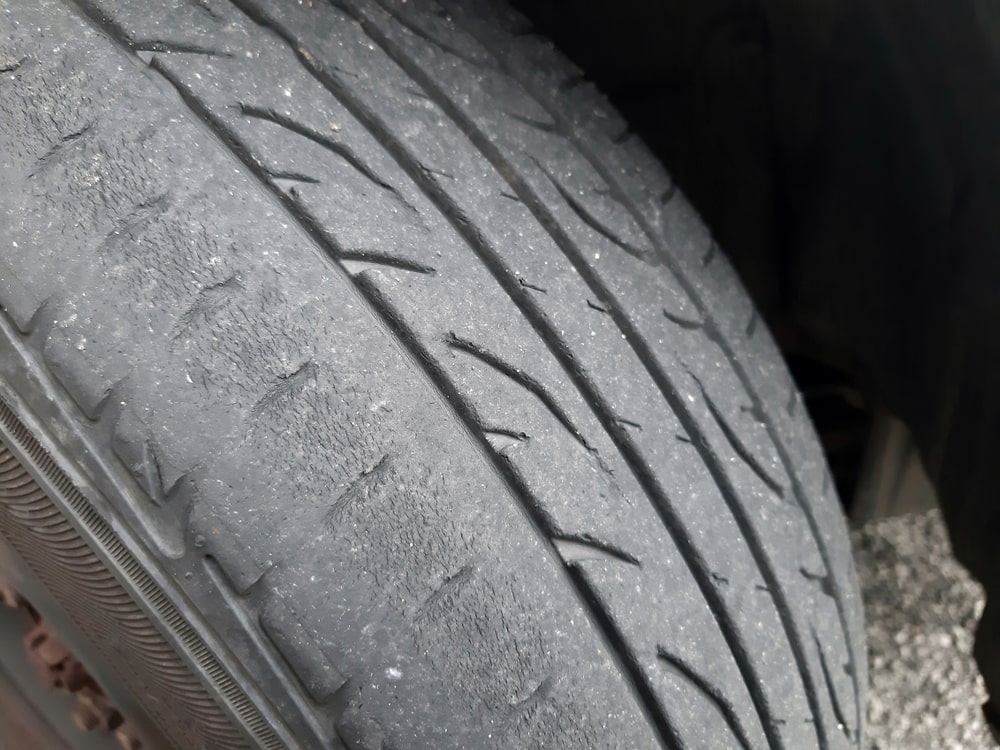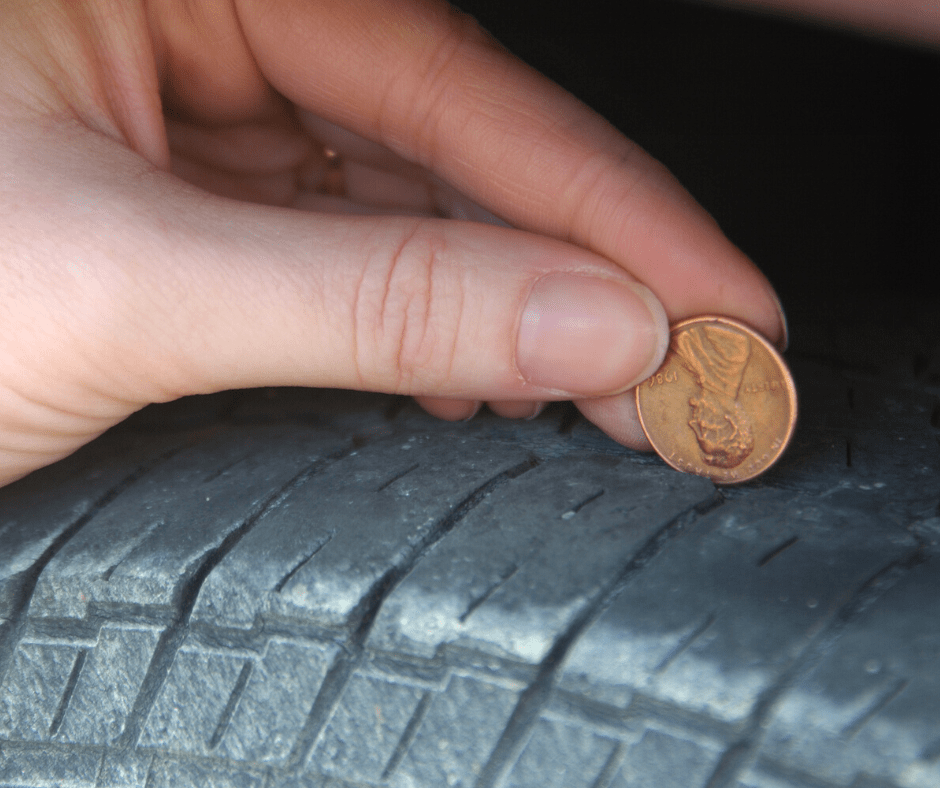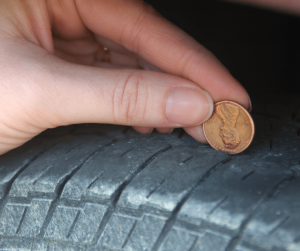If you’re wondering, “is it time to replace my tires?” you’re not alone.
Your vehicle’s tires are your car’s point of contact with the road and are integral to a safe driving experience. They also impact your vehicle’s handling, steering, and gas mileage. Despite their importance, though, many people don’t know when to buy new tires.
This leads to a variety of tire safety concerns.
According to a recent survey conducted by the Rubber Manufacturers Association (RMA), an estimated 13% of vehicles in the US have at least one bald tire.
In this blog, we’ll share our tire safety tips and help you identify when it’s time for new tires.
Let’s dive in.
How do I Know When to Replace My Tires? 5 Signs to Look for
Are your tires unsafe to drive on? Are you wondering, “is it time to replace my tires?” Look for these five telltale signs that your tires are becoming unsafe:
1. Sidewall imperfections
If you’ve noticed cracking or cuts in the sidewall of your tire, it’s time to buy replacements. Sidewall imperfections indicate dried-out rubber or excessive wear and tear.
Over time, these things can cause flats, tire blow-outs, and other dangerous driving hazards.
Other warning signs include bubbling, blistering, or bulging in the sidewall, or any obvious scrapes or tears.
2. Uneven tread wear

The tread should wear relatively evenly when you keep your tires properly inflated and in good condition. If you’ve noticed uneven tread wear, though, it’s a warning sign.
This could indicate damaged tires, misaligned wheels, poor inflation, or issues with your car’s suspension system. Have your tires checked out by an auto maintenance team for more recommendations.
3. Bald spots or excessively worn tread
Most modern tires have a cool feature: they have tread wear indicator bars that run across the tread. These indicators sit at 2/32-inch, which is the minimum allowable tread depth for cars on the road today.
If you can see or hear these bars as you drive. If you’re driving on tires that don’t have a tread wear gauge, you can purchase inexpensive gauges at your local auto parts store.
You can also use the “penny test” to check the tread depth on your tires.

Here’s how it works:
Grab a penny and insert it into the tread groove with the top of Lincoln’s head facing down. If you can see the top of his head or above, your tires have less than 2/32” of tread. In this case, we recommend replacing them immediately to ensure safe driving.
4. Vibration or poor handling
Worn-out tires take a toll on the way your car drives. If you’ve noticed excessive vibration, pulling, or “wallowing,” it’s a sign that you need new tires.
These things may be a sign that your tire is damaged internally or that your tires are improperly inflated or excessively worn. Sometimes, they could also indicate misalignment, balance problems, or bent tire components.
In any case, it’s wise to get your vehicle to the mechanic right away.
5. Tire age
Assuming you drive about 12,000-15,000 miles yearly (that’s the average for most drivers), your tires will last approximately 3-5 years.
If your tires are older than that, or if you drive significantly more than 15,000 miles each year, your tires may require replacement sooner.
To keep yourself safe on the road, take your vehicle in for regular tire evaluations and safety inspections by a licensed mechanic. The mechanic team will be able to evaluate your tires and make recommendations for a new set, if needed.
Tire Maintenance Tips to Ensure Safer Driving
Tires don’t last forever, but you can take proactive steps to extend the lifespan of yours. Here are a few tips we recommend:

- Check your tire pressure at least once a month. Did you know that you can improve gas mileage by 3.3 percent by keeping your tires at the proper inflation level? With this in mind, don’t rely on computer tire pressure indicators to tell you if something’s wrong with your tire. At least once a month, use a handheld pressure gauge to check the air pressure in all four tires and your spare. Inflate or remove air, as needed, to maintain proper tire pressure.
- Have your tires rotated every 5,000 miles. Over time, tires can begin to wear unevenly. Prolong their lifespan and keep your daily drive as safe as possible by having them rotated every few months.
- Check your alignment at least twice a year. Bumps, potholes, and other driving hazards can knock your car’s tires out of alignment, causing them to wear unevenly and decreasing your car’s handling. To prevent this, and extend the lifespan of your tires, have them balanced at least twice a year.
- Purchase quality tires. Set yourself up for success by purchasing quality tires from the get-go. Work with a skilled mechanic to identify quality tires that are right for your vehicle and driving preferences.
- Drive carefully. Accelerating and decelerating quickly, taking corners too fast, and driving roughly over bumps, potholes, and uneven roads can all take a toll on your tires. To help them last for as long as possible, drive mindfully on your daily commute. Avoid braking suddenly or navigating corners too quickly, and watch out for curbs and other road hazards.
DeBroux Automotive is Here to Protect Your Tires
Don’t sit around wondering, “is it time to replace my tires?”
Get answers you can count on by bringing your vehicle to a skilled Pensacola mechanic. Our team of auto maintenance experts will evaluate your car and its tires and give you honest information about whether it’s time to replace your tires or not.
If you need new tires, we’ll work with you to choose tires that work for your vehicle and your driving habits and are the best possible deal for your budget.
Don’t compromise on your car’s safety or maneuverability any longer. Visit DeBroux Automotive for reliable tire recommendations you can trust.
